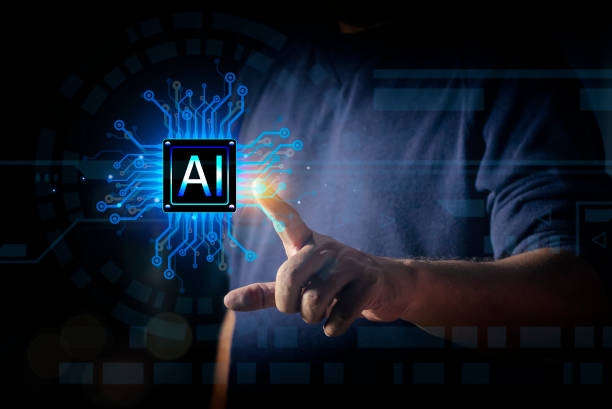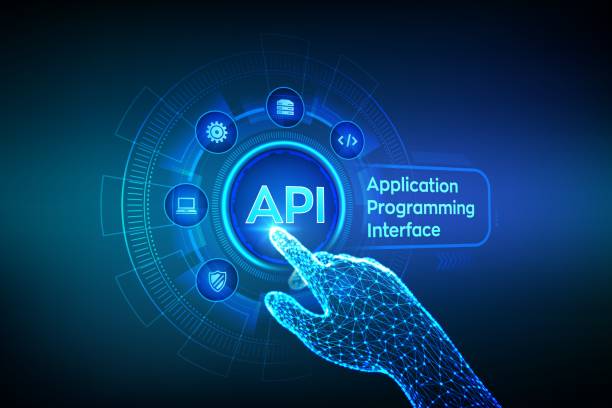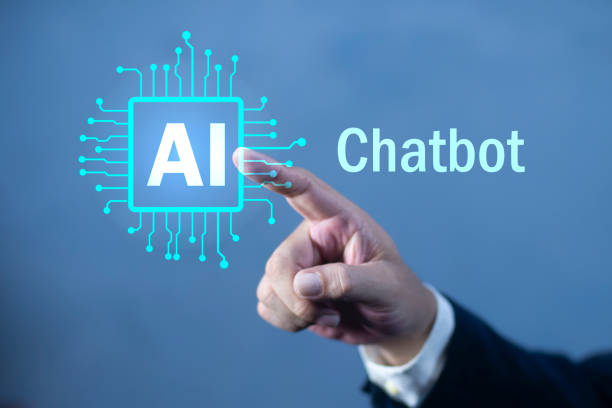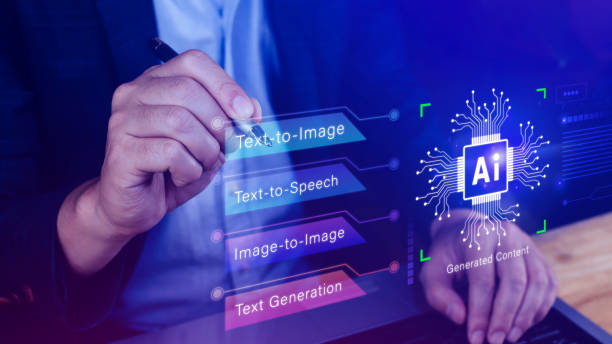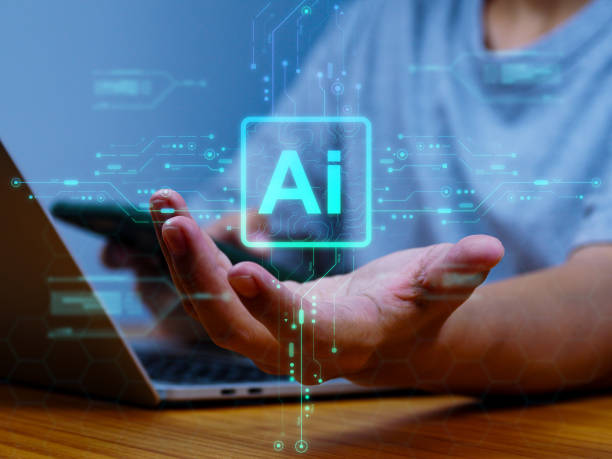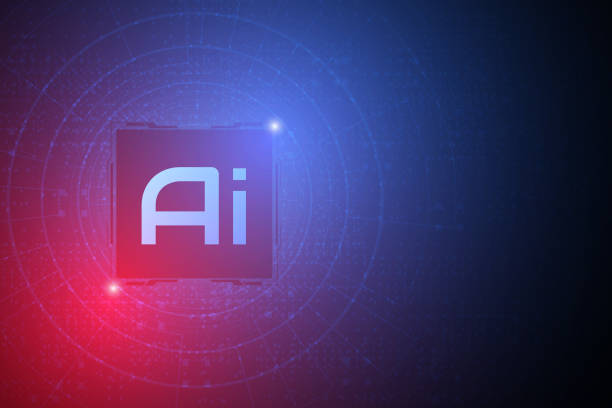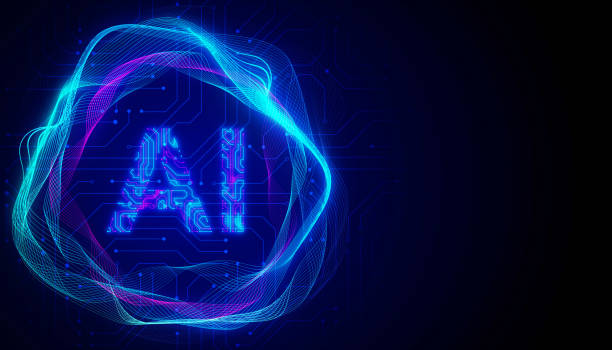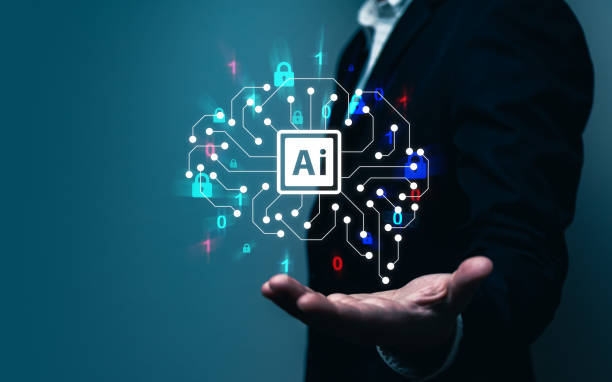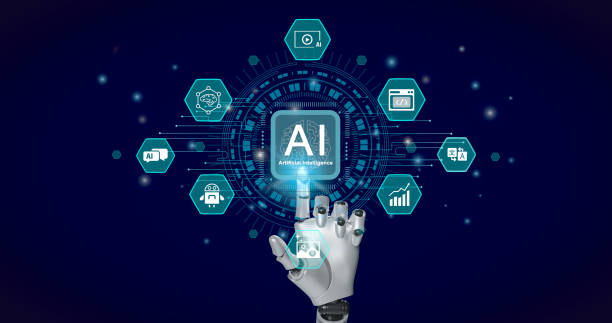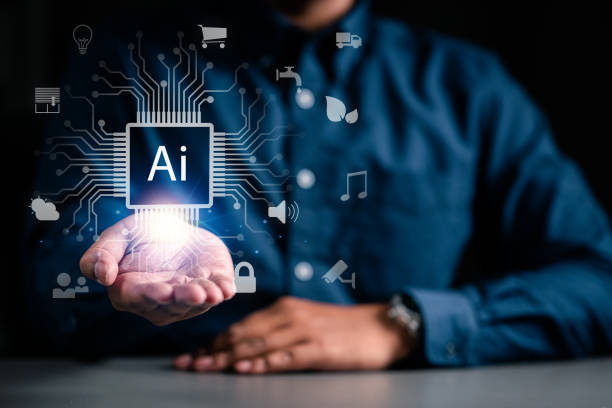What is an Artificial Intelligence Robot and How Does it Work?
Artificial Intelligence Robot (#AI_Robot) is a combination of two separate concepts, namely robotics and artificial intelligence (#Artificial_Intelligence).
Robotics deals with the design, construction, operation, and application of robots, while artificial intelligence is a branch of computer science that deals with creating machines that are capable of performing tasks that typically require human intelligence, such as learning, problem-solving, and decision-making.
Artificial intelligence allows robots to understand their environment, process information, and act based on it, using various algorithms and models.
A traditional robot is usually pre-programmed to perform a set of specific tasks repeatedly.
But an artificial intelligence robot can learn from experience, adapt to new conditions, and make better decisions.
These robots use sensors to collect information from the environment, processors to analyze data, and actuators to perform actions.
This process allows them to interact with the real world and perform various tasks automatically.
In short, an artificial intelligence robot is a robot that has the ability to understand, reason, and learn using artificial intelligence techniques.
This makes these robots much more flexible and powerful than traditional robots.
Did you know that 85% of customers check your company’s website before any interaction?
Build a company website worthy of your credibility with Rasaweb.
✅ Increase credibility and customer trust
✅ Attract high-quality leads
⚡ Get free website design consultation
Diverse Applications of Artificial Intelligence Robots in Various Industries
Artificial Intelligence robots, due to their unique capabilities, have found widespread applications in various industries.
In the manufacturing industry, these robots are used for automating production processes, quality inspection, and packaging.
In the healthcare industry, they can assist surgeons in performing complex operations, dispensing medications, and caring for patients.
In the service industry, artificial intelligence robots are used to provide customer service, guidance, and answer questions.
For example, in agriculture, robots equipped with artificial intelligence can automatically harvest crops, remove weeds, and check the health status of plants.
In logistics and warehousing, they can automatically move and sort goods.
In space and submarine exploration, they can operate in dangerous and inaccessible environments for humans.
This diversity of applications shows that artificial intelligence robots have the potential to create significant transformations in various industries and can help improve productivity, reduce costs, and increase safety.
Main Components of an Artificial Intelligence Robot and How They Interact
An artificial intelligence robot consists of various components that, working together, enable the performance of various tasks.
These components include sensors, processors, actuators, software systems, and a power source.
Sensors collect information from the environment, such as cameras, microphones, temperature and pressure sensors.
Processors process the collected data and make the necessary decisions.
Actuators allow the robot to interact with the environment, such as motors, arms, and wheels.
Software systems include artificial intelligence algorithms, control programs, and user interfaces.
The power source provides the energy needed to operate all components.
These components interact with each other so that the robot can perform its tasks correctly.
For example, sensors send information to the processor, the processor uses artificial intelligence algorithms to analyze the data and decides how the actuators should act.
Then the actuators act according to the processor’s commands, and the robot performs its task.
| Component | Description |
|---|---|
| Sensors | Collecting information from the environment |
| Processors | Processing data and making decisions |
| Actuators | Performing actions and interacting with the environment |
| Software Systems | Artificial intelligence algorithms and control programs |
| Power Source | Providing energy |
Click here to preview your posts with PRO themes ››
Types of Artificial Intelligence Algorithms Used in Robots
Artificial intelligence algorithms play a key role in the operation of artificial intelligence robots.
These algorithms allow robots to learn, reason, make decisions, and interact with their environment.
There are various types of artificial intelligence algorithms used in robots, including machine learning, deep learning, neural networks, search algorithms, and planning algorithms.
Machine learning allows robots to learn from experience without being explicitly programmed.
Deep learning is a subset of machine learning that uses deep neural networks to analyze complex data.
Neural networks are computational models inspired by the structure of the human brain.
Search algorithms are used to find the best solution to a problem.
Planning algorithms allow robots to create plans for performing various tasks.
Choosing the right algorithm depends on the type of task and the environment in which the robot operates.
Does your company’s website perform as well as your brand deserves? In today’s competitive world, your website is your most important online tool. Rasaweb, a specialist in designing professional corporate websites, helps you to:
✅ Gain customer credibility and trust
✅ Turn website visitors into customers
⚡ Get a free consultation!
Challenges and Limitations of Artificial Intelligence Robot Development
The development of artificial intelligence robots faces numerous challenges and limitations.
One of the main challenges is the high cost of developing and implementing these robots.
Designing, building, and programming these robots requires various expertise and the use of advanced technologies, which can be very expensive.
Another challenge is the complexity of artificial intelligence algorithms.
Developing algorithms that can effectively interact with the real world and make correct decisions is very difficult.
In addition, there are concerns about the security and safety of artificial intelligence robots.
Ensuring that these robots cannot harm humans or disclose sensitive information is very important.
Also, ethical issues related to the use of these robots in various fields, such as war and surveillance, should be considered.
The Impact of Artificial Intelligence Robots on the Labor Market and the Economy
The entry of artificial intelligence robots into the labor market and the economy has profound effects.
On the one hand, these robots can lead to increased productivity, reduced costs, and the creation of new job opportunities.
Automating repetitive and tedious processes can allow workers to focus on more creative and strategic tasks.
On the other hand, these robots can cause the loss of some jobs, especially jobs that require low skills.
To address these challenges, there is a need to invest in education and training and the development of new skills.
Workers need to learn skills that are needed in an automated world, such as problem-solving, critical thinking, and collaboration.
Also, governments should adopt policies that support workers and help them find new jobs.
The Future of Artificial Intelligence Robots: Prospects and Predictions
The future of artificial intelligence robots is very bright and full of potential.
It is expected that these robots will play a more important role in our lives in the coming years.
Recent advances in artificial intelligence, robotics, and sensors have led to the development of smarter, more flexible, and more powerful robots.
In the future, we will see more widespread use of these robots in various fields, including manufacturing, healthcare, transportation, agriculture, and services.
Click here to preview your posts with PRO themes ››
For example, surgical robots can perform more complex operations with greater precision and delicacy.
Driverless robots can reduce traffic accidents and improve traffic.
Farmer robots can automatically harvest crops and optimize water and fertilizer consumption.
However, to realize this potential, we must pay attention to the challenges and limitations of the development of artificial intelligence robots and find solutions to address them.
| Field | Predictions |
|---|---|
| Healthcare | More advanced surgical robots, home patient care |
| Transportation | Self-driving cars, intelligent transportation systems |
| Agriculture | Farmer robots, optimal resource management |
| Services | Customer service robots, 24-hour support |
Ethical Aspects of the Development and Use of Artificial Intelligence Robots
The development and use of artificial intelligence robots raise important ethical issues.
One of these issues is accountability for the decisions and actions of robots.
If a robot makes a decision that leads to damage, who will be responsible? The robot’s manufacturer, the programmer, or the user? Another issue is privacy.
Robots that collect and process personal information must properly protect this information and prevent its misuse.
Also, there are concerns about discrimination and injustice.
Artificial intelligence algorithms may unintentionally be discriminatory and lead to decisions that benefit a particular group at the expense of other groups.
To address these issues, there is a need to develop laws and regulations that regulate the use of artificial intelligence robots and protect human rights and interests.
Are you worried about losing customers who don’t have a professional online store?
Forget these worries by designing an online store with Rasaweb!
✅ Dramatic increase in sales and visitor-to-customer conversion rate
✅ Professional and user-friendly design that builds customer trust
⚡ Get free advice from Rasaweb
How to Choose and Implement an Artificial Intelligence Robot
Choosing and implementing a suitable artificial intelligence robot requires careful planning and review.
First, you must accurately identify your needs and specify what tasks you want to entrust to the robot.
Then you should do your research and review the various robots available on the market.
Pay attention to their features, capabilities, price, and technical support.
After choosing the right robot, you need to develop a plan for its implementation.
This plan should include installation, configuration, training, and testing steps.
Also, you must provide the necessary resources for the implementation of the robot, such as human resources, equipment, and software.
Finally, you should regularly evaluate the performance of the robot and, if necessary, apply the necessary changes and improvements.
The Career Future of Artificial Intelligence Robot Experts
With the increasing use of artificial intelligence robots in various industries, the demand for experts in this field will also increase.
There are numerous job opportunities for robotics engineers, data scientists, artificial intelligence experts, and programmers in this field.
These experts can work in various fields, such as the design, construction, programming, implementation, and maintenance of artificial intelligence robots.
To enter this field, you need related education and skills.
Having a degree in robotics engineering, computer science, artificial intelligence, or related fields can be very helpful.
Also, learning programming skills, machine learning, deep learning, and working with robotics tools is essential.
By acquiring these skills and knowledge, you can become a successful expert in the field of artificial intelligence robots and work in this growing industry.
Click here to preview your posts with PRO themes ››
Frequently Asked Questions
| Question | Answer |
|---|---|
| What is an Artificial Intelligence Robot? | It is a robot that uses artificial intelligence capabilities to understand the environment, reason, learn, and make decisions to perform complex tasks independently. |
| What is the main difference between a regular robot and an AI robot? | AI robots can learn and adapt to their environment, while regular robots usually operate based on fixed, pre-programmed plans. |
| In what areas are AI robots used? | In areas such as industry (production lines), medicine (robotic surgeries), services (customer support, smart vacuum cleaners), exploration (space and underwater), and entertainment. |
| How do AI robots learn? | They acquire new skills through machine learning (ML) and deep learning (DL) algorithms, by analyzing large data sets and identifying patterns. |
| Can AI robots have feelings? | Currently, no. They can identify or simulate emotions, but they do not have a real experience of emotions like humans. |
| What are the most important advantages of using AI robots? | Increased productivity, reduced human error, performing dangerous or repetitive tasks, and providing innovative and efficient services. |
| What are the challenges in developing AI robots? | The need for abundant and high-quality data, the complexity of algorithms, ethical issues, cybersecurity, and high research and development costs. |
| Are AI robots dangerous to humans? | By following safe design principles and ethical regulations, no. Concerns are more related to social and economic impacts, such as changes in the labor market. |
| What is an example of an AI robot in everyday life? | Smart vacuum cleaner robots (such as Roomba) that automatically map and clean the house, or smart voice assistants (such as Siri and Alexa). |
| How is the future of AI robots predicted? | They are expected to become smarter, more autonomous, and capable of more complex interaction with humans, and will play a more prominent role in industry, medicine, transportation, and everyday life. |
And other services of Rasa Web Advertising Agency in the field of advertising
Smart Advertising Campaign: A combination of creativity and technology to attract customers through intelligent data analysis.
Intelligent Direct Marketing: Designed for businesses looking to improve SEO ranking through precise audience targeting.
Intelligent Content Strategy: Professional optimization to increase sales using intelligent data analysis.
Intelligent Direct Marketing: A dedicated service to grow campaign management based on intelligent data analysis.
Intelligent Digital Branding: An effective tool to attract customers with attractive user interface design.
And more than hundreds of other services in the field of internet advertising, advertising consulting, and organizational solutions
Internet Advertising | Advertising Strategy | Advertorial
Resources
Applications of Smart Robots in Everyday Life
,What is Artificial Intelligence?
,What is the Relationship between Robotics and Artificial Intelligence?
,Artificial Intelligence; Turn into Skills and Threats
? Is your business ready to fly to the heights of success? Rasaweb Advertising Digital Agency with comprehensive and professional services, including online store design Modern and user-friendly, targeted digital marketing strategies and specialized SEO, paves the way for the growth and brilliance of your brand.
📍 Tehran, Mirdamad Street, next to the Central Bank, South Kazerun Alley, Ramin Alley No. 6
“`

